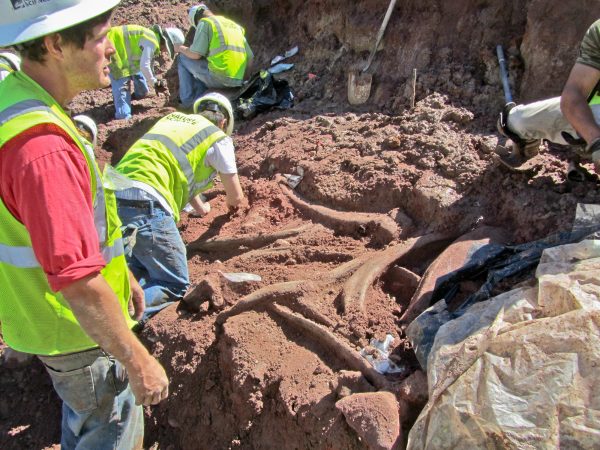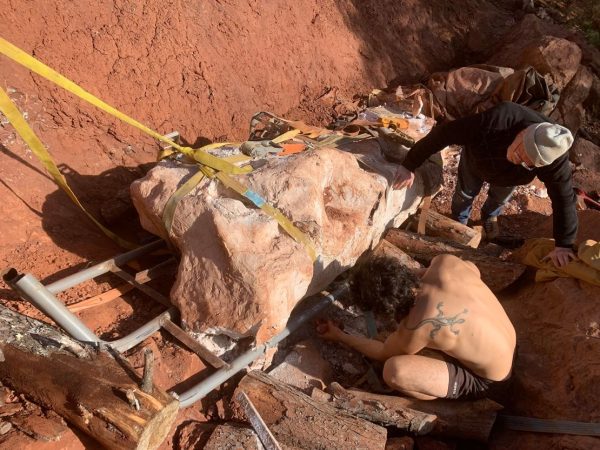A team of paleontologists in southern Colorado has recently made a remarkable discovery of two massive fossils – a tibia and fibula – belonging to a longneck sauropod dinosaur that roamed the earth millions of years ago.

The fossils were found in the Royal George Region, an area well-known for its rich history of prehistoric fossil discoveries, as noted by Cañon City officials. Interestingly, the fossils were not initially located by professionals but instead were stumbled upon by an outdoorsman while hiking through public lands. Upon the discovery, the individual promptly reported their find to the Bureau of Land Management.

Collaborating with the Royal George Museum and the Denver Museum of Nature and Science, the Colorado BLM organized an excavation team to carefully extract the fossils from their resting place. Estimated to be approximately 145 to 150 million years old, these leg bones hold significant scientific value.

Excited about the find, the Royal George Regional History Museum unveiled plans to showcase the colossal bones to the public on January 21. During the following weeks, experts and volunteers will diligently work on preparing and preserving the fossils at the museum, allowing visitors to witness the process firsthand.

Upon arrival at the excavation site, Paleontologist Joshua Broussard was astounded by the discovery. What was supposed to be a 200-300 pound tibia turned out to be an even more extraordinary find with the presence of the dinosaur’s fibula lying adjacent to it. The careful excavation and encasement of the fossils in plaster jackets were crucial for their safe transportation.

Broussard emphasized the importance of understanding the geological context in which the fossils were found, highlighting how details such as the specific rock layer could provide valuable insights into the ancient environment. Maintaining the integrity of the intact fossils was particularly significant, as they provided a rare glimpse into the precise arrangement of the dinosaur’s leg in its living state.

To ensure the safe transport and preservation of the fragile fossils, personnel from the Denver Museum of Nature and Science and BLM collaborated to encase them in plaster jackets. These fossils, believed to be over 145 million years old and perfectly intact, offer a valuable opportunity for further research and study into the prehistoric world.